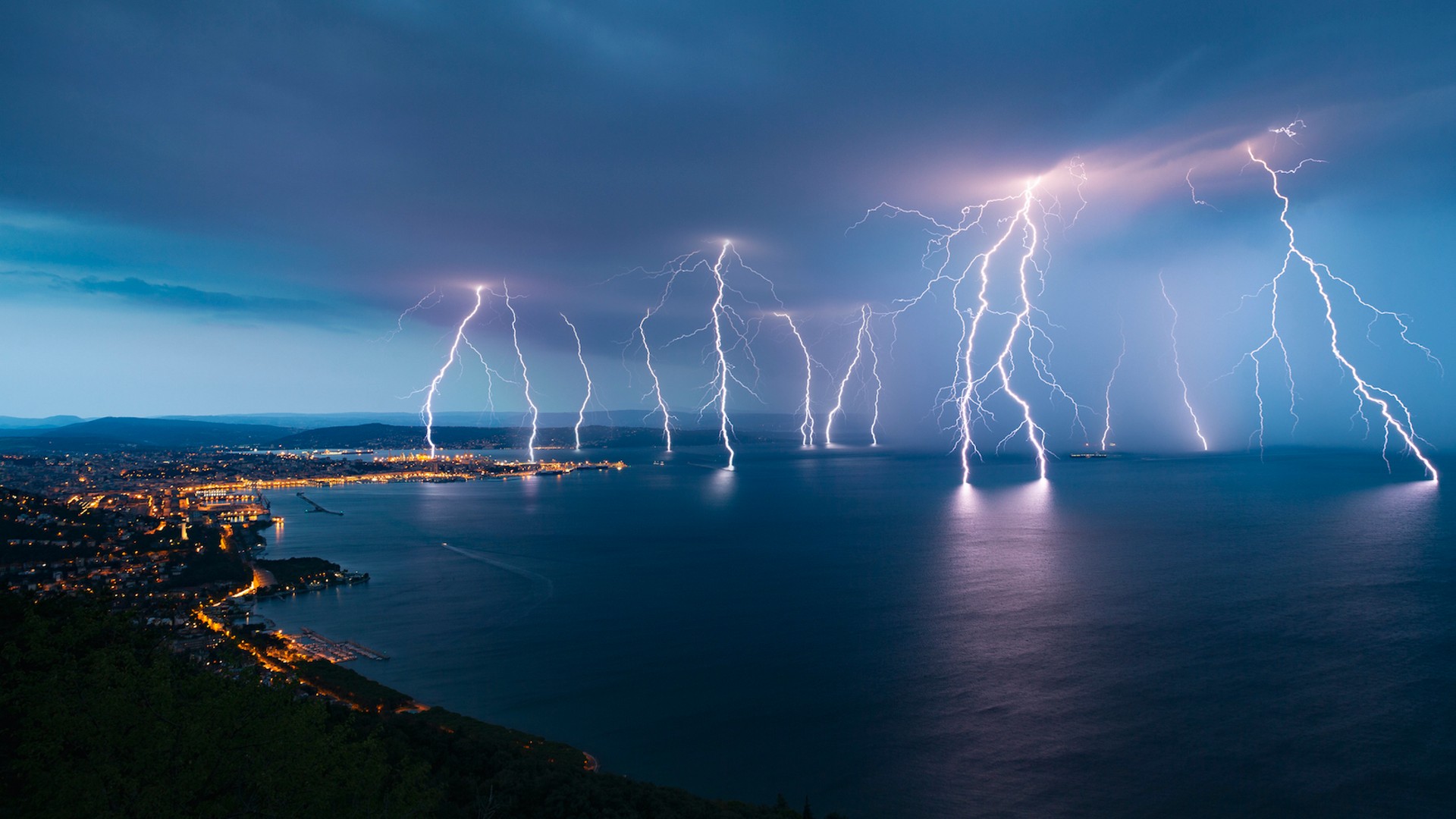The energy needed for thunderstorms could come from an avalanche of electrons seeded by extraterrestrial cosmic rays, a new study claims.
Scientists already knew that lightning is an electrical discharge between thunderclouds and Earth’s surface, but exactly how storm clouds obtain an electric field powerful enough to hurl a bolt has remained a mystery for centuries.
Now, a new study has used computer models to reveal that lightning strikes as the result of a powerful chain reaction that begins in outer space. The researchers published their findings July 28 in the Journal of Geophysical Research: Atmospheres.
“Our findings provide the first precise, quantitative explanation for how lightning initiates in nature,” study lead author Victor Pasko, a professor of electrical engineering in the Penn State School of Electrical Engineering and Computer Science, said in a statement. “It connects the dots between X-rays, electric fields and the physics of electron avalanches.”
Lightning’s electrical nature was famously confirmed by Benjamin Franklin in 1752. Franklin’s iconic, though often misrepresented, experiment involved flying a kite affixed to a 1-foot-long (0.3 meters) wire on one end and a twine string attached to a key with the other, which Franklin held with a silk ribbon. When a storm arrived, the kite became electrified and the twine became wet, so that a small spark jumped from the key to his outstretched finger.
Despite this discovery, data recorded by planes and weather balloons show that the electrical field needed for electrons to cascade down to Earth is around 10 times greater than the one actually measured inside storm clouds.
Related: ‘Killer electrons’ play pinball with space weather around Earth
There are two competing theories to explain how lightning actually occurs. The first, atmospheric static electricity, posits that the friction between ice clumps in storm clouds separates negatively charged electrons from atoms, causing them to pool until they ionize particles in the atmosphere below them, freeing enough electrons to race to the ground along multiple forking paths.
In the second theory, this initial ionization is achieved by cosmic rays — high-energy subatomic particles (mostly protons) from outer space that strike the upper atmosphere. These rays come from the sun; stellar explosions called supernovas; rapidly spinning neutron stars called pulsars; and other, unknown sources. When the cosmic particles strike the atmosphere, they create a runaway breakdown of electrons that ends in a ground-striking cascade.
In the new study, the researchers pooled data from ground-based sensors, satellites and high-altitude spy planes, and matched the information to a mathematical model that simulated the conditions in a storm cloud preceding a strike.
The model’s simulations supported the cosmic ray theory, showing that electrons produced by high-speed protons accelerated along electric-field lines and multiplied as they struck molecules in the atmosphere, such as nitrogen and oxygen. This leads to an avalanche of electrons, producing the high-energy photons that initiate lightning, the researchers say.
Strikingly, the model also explains why flashes of gamma-rays — high energy photons — and X-rays occur before lightning strikes.
“In our modeling, the high-energy X-rays produced by relativistic electron avalanches generate new seed electrons driven by the photoelectric effect in air, rapidly amplifying these avalanches,” Pasko said. “In addition to being produced in very compact volumes, this runaway chain reaction can occur with highly variable strength, often leading to detectable levels of X-rays, while accompanied by very weak optical and radio emissions. This explains why these gamma-ray flashes can emerge from source regions that appear optically dim and radio silent.”
